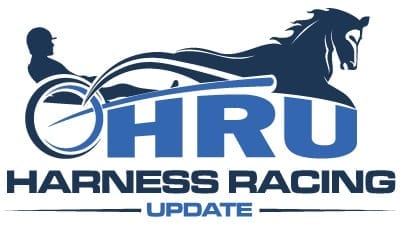

RMTC task force to study Glaucine
by Joe Faraldo
The New York State Gaming Commission has received at least 35 written reports from its own highly-regarded testing laboratory regarding positive tests for Glaucine at New York State tracks. Other jurisdictions have reported similar positives. Not only hasn’t the Gaming Commission taken any action to call for the return of purse money, much less done anything as required by its regulations; now the Commission has apparently decided that there is some reason to have the Racing Medication and Testing Consortium (RMTC) conduct “research” on Glaucine. The drug is manufactured, and generally available, outside the United States. This has been done despite the (New York) Gaming Commission’s research lab coming to its own conclusions; something in the past always deemed more than satisfactory.
Meanwhile, with no action taken, positive tests continue to be reported in New York and other jurisdictions. Presumptively, RMTC will issue a report about this drug at some point in time, but more time will obviously pass. One has to wonder why this unprecedented action is being done via RMTC, and what data is being shared or withheld from RMTC?
RMTC was formed with the intent of developing a Controlled Therapeutic Medication Schedule (CTMS) to achieve uniformity in the use of therapeutic medications in race horses, while preventing medications and drugs from unduly influencing the outcome of races. The RMTC does not have a very good track record achieving its goals, and its scientific work in establishing thresholds has often left much to be desired. Dr. Scott Palmer, the New York Gaming Commission’s Equine Medical Director who sits on the newly announced Task Force, certainly knows that to be the case.
In the past, RMTC sought to provide a guideline to the New York Gaming Commission to adopt for all breeds for Flunixin (Banamine) and for Clenbuterol for harness horses. The recommendations were not only contrary to some of RMTC’s own scientific guidelines; its research, such as it is, remains hidden under a “confidentiality” agreement which prevents RMTC’s members from divulging even the research they reviewed, much less the scientific basis for their determinations of those thresholds. It is, of course, intuitively obvious that undisclosed, unpublished research can never fail to pass peer review. Had the New York State Gaming Commission adopted those RMTC thresholds, New York horsemen would have suffered false positives, because the RMTC guidelines were, in point of scientific fact, erroneous, and later corrected.
By way of example, in 2013, RMTC adopted a threshold for Xylazine (Rompun) that was too low. That reportedly resulted in the disqualification and penalization of over thirty (30) horses and trainers. In 2016, after those horsemen were penalized, RMTC increased the threshold 20 times higher; that did little good for those Florida horsemen who saw a spike in drug positives. Florida was one of twenty states adopting the much heralded National Uniform Medication Program. Uniform rule recommendations not based upon scientific fact present a horrible scenario for individual horsemen, as well as for the industry. What in God’s name was the basis for those RMTC recommendations in the first instance? Just this year, two more threshold changes occurred; one for the analgesic detomidine, the other for omeprazole (ulcer medicine). The originally published RMTC thresholds were apparently not based on actual science at all, tantamount to perhaps being pulled out of a hat and conveniently protected under the confidentiality agreement.
The confidentiality agreement shielded RMTC from scientific scrutiny, the kind to which the New York State Gaming Commission laboratory is subjected, as the industry bears witness to in contested cases where all underlying data is subject to legal and scientific challenge. RMTC, once receiving financial support from the USTA, saw that support come to an abrupt halt because it ignored the harness industry and the apparent failings discovered in push back by the SOA of NY. Thankfully, due to that aggressive push back, the New York State Gaming Commission did not follow the RMTC’s recommendations for Banamine and Clenbuterol thresholds. Thus, potentially devastating catastrophes for horsemen as a result of ill-conceived guidelines were avoided in New York. The Florida thoroughbred horsemen did not fare as well, and today the HBPA begs to undo the RMTC uniform rule guidelines.
Later, RMTC issued a threshold level for Cobalt, which also seemed to be out of touch with actual research being conducted on the drug. Research principally funded by the USTA conducted by Dr. George Maylin, the New York State Gaming Commission’s equine pharmacologist, as well as renowned researchers Dr. Karen Malinowski and Dr. Kenneth McKeever of the Equine Science Center at Rutgers University, also exhibited clear problems with RMTC’s conclusions and recommendation in this area.
After the problematic RMTC litany listed, one would think that Dr. Palmer, the Equine Medical Director, himself not a research scientist, would know better than to look to RMTC for assistance of any kind on the reported Glaucine positives in New York. This is especially so, since the New York State Gaming Commission’s lab should have, and did give consideration to possible environmental contamination in the levels reported to be found in both blood and urine. It is reported that the New York lab conducted tests to determine just how much a horse would need to eat of its own bedding to hit the levels allegedly found. Astoundingly, in order to achieve these levels, it was scientifically determined that anywhere from 3 to 10 quarts of shavings would need to be ingested during the relevant time frame.
Getting back to the basic problem with the RMTC selection, it should be noted that RMTC also developed an accreditation process for equine drug testing laboratories. Accreditation costs states money in order to meet the accreditation protocols; money that could have been better spent on research on drugs that heretofore, and still today, go undetected. Interestingly, when the Indiana Horse Racing Commission sent “audit samples” to a second lab for analysis, the second lab found several “positive tests” which were missed by RMTC’s accredited Truesdail Laboratories, Inc.
So what is the reason to have the RMTC Task Force study Glaucine? One stated reason is to consider where to assign Glaucine in the system of drug classification. Well, if it is a bronchial dilator like Albuterol, Clenbuterol, Afrin or Fenspiride, which even RMTC calls threats to the integrity of racing, one would not need great intuitive powers to group the drug in the same class. One has to wonder if the New York State Gaming Commission’s Equine Medical Director, Dr. Palmer, is searching for someone, anyone, to provide the Gaming Commission with some rationale for its departure from the normal process of, after the horse test clean, return of the purse for redistribution and affording the trainer the opportunity to present facts proving contamination, if indeed that is the case. The industry has now been waiting the six (6) months someone predicted this would take and the latter two items remain open in spite of New York State Gaming Commission regulations.
Therefore, one is prompted to ask if something else is going on here? Is it the pleading to New York regulators from an interested party when these positives first surfaced, telling them he was getting “crucified in the press”? Is it the fact that levels as high as 11 ng/ml, coupled with the high number of positives, is just too much for the industry to swallow? With positives allegedly found in many places now, the self-serving mantra that some tracks claim, that of being the pinnacles of integrity, become indelibly tarnished. In New York, no substance, other than listed permissive medications, are allowed to be present in a horse’s system within seven (7) days of racing. Glaucine has a half-life of only six-to-eight hours and is not a listed substance. What will the marriage of RMTC and Glaucine produce? What is the expected gestation period; six, nine or 12 months? Will confidentiality be waived?
It should be remembered that an industry that rightfully clamors for the need to detect previously unknown and undetectable substances, whose origins are generally in foreign countries as Fenspiride and Clenbuteral were years ago, must acknowledge that it still wants new substances detected. If not, we are wasting a great deal of time and effort for naught.
In sum, there is no “cover” for lack of integrity, and while horsemen do push the envelope as far as they can sometimes, neither regulators nor scientists should demonstrate anything less than the responsibility accorded the roles in which they are vested. Often, however, they seem to have difficulties to getting out of their own way. The New York reported Cobalt positives, originally meted-out as career-ending fines and suspensions, were negotiated out to much lesser penalties, but that was not reported.
The multitude of horsemen in New York and elsewhere will continue to watch this Glaucine saga quite closely, and with much scrutiny being given to the process itself, to determine if the motive is genuine, or ulterior. The prime open question here is: with RMTC’s questionable track record and its confidentiality requirement, which doesn’t lend itself to any scientific scrutiny, what is the exercise trying to achieve?
Hopefully, for the good of this game, warts and all, the RMTC group assembled, was not cherry picked for some questionable purpose. The industry deserves the facts based upon solid, verifiable scientifically data for the good of all, and especially for the good of the game itself.















